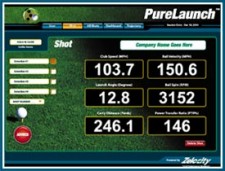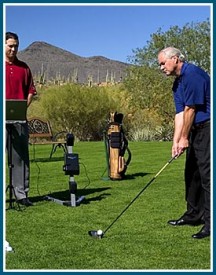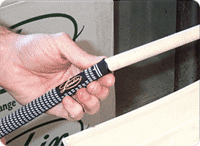Is the Problem You or Your Clubs?
Is it You or Your Clubs?
5 Reasons You May Not be Getting the Most from Your Equipment
By Jeff Jackson, for use by “Hometown Golf”
You practice or play a couple times a week. You
have taken lesson after lesson. You’ve done all the right things…worked on your short game, practiced putting on the carpet until your spouse is convinced you’re crazy, you’ve even purchased the latest instructional books and videos. But, unfortunately your game is still not what you want it to be. Perhaps there is one key element that is not part of your game improvement program…your equipment. Just because you have purchased the latest in equipment technology does not necessarily mean that technology matches your game. Maybe it’s not your skill that’s holding you back; maybe it’s your equipment.
Matching the clubs you play with your swing characteristics is a sure way toward game improvement. All too often a player assumes that high-dollar clubs will immediately take strokes from their score. In just about every case this is flawed thinking. Golf equipment is produced on assembly lines to a series of “stock” specifications. While these specifications might fit certain players, the chances they fit any one golfer are slim and none. It’s not that the clubs are “bad”, it’s that their specs just don’t quite fit the player. With a few upgrades, the clubs actually can help you play better. Here are five reasons why you may not be getting the most from your equipment…
Driver Launch Angle…High Launch/Low Spin: If you haven’t tested your driver on a launch monitor, you are behind the performance curve. Most players can add distance with no sacrifice in accuracy by finding a combination of loft, head CG, shaft and golf ball. No longer should you just choose a driver based on loft and shaft flex. While doing so might result in the proper club for you, there are a few other very important parameters to consider as well. While driver loft is the single most important factor when considering how far a driver will hit a ball, the CG of the head plays an important role A club with a CG closer to the face or one with a CG higher in the head will result in lower launch angles. This is not good for most players. The vast
majority of golfers can immediately add distance with a higher launch angle. This can result from either a higher club loft or a CG lower in the head or farther away from the face. Many of today’s drivers feature weights toward the back of the head to help increase launch angle through a change in head CG.
Don’t overlook the shaft and the ball when trying to improve your performance. Today’s shafts are made with specific launch characteristics in mind. While flex is important – faster swingers require stiffer shafts – the launch parameters of the shaft are keys to how far a drive can be hit – especially with today’s balls. Composite shafts allow manipulation of kick points to create specific launch angles for each shaft. Today’s balls are categorized as high-spin, low-spin or somewhere in between. Finding the best match between head, shaft and grip is what launch angle optimization is all about. Going through a launch monitor fitting session will provide you with this information. The session consists of hitting different balls with a combination of driver lofts and head CG’s and different shafts. You will also hit your driver to compare your current launch angle with your ideal launch angle the 30-45 minute session is time well spent and will ensure that your driver is working to yield the most distance and accuracy possible.
Shafts Too Stiff or Two Weak: Now that you have a driver that optimizes your launch angle, you need to take a look at the shafts in your irons. Regardless of what flex the shaft bands may tell you that the shafts are, it is important to keep in mind that nearly all manufacturers have their own method of measuring shaft flex. That means that what company calls a stiff shaft might be what another calls an “R.” If you are experiencing any of the following, the shafts in your irons might not be the proper flex for you…inconsistent shots, shots too high or low or feel that is too “boardy” or whippy. A hit testing session on swing computer will help determine what iron shafts best match your game. Much like the launch monitor session, this will take little time and can make a huge performance and feel difference if it is determined that your iron shafts are not the proper flex for you.
Poorly maintained or improperly Sized Grips: Grip size plays an important role in making sure a player’s hands maintain consistent contact with the club throughout the swing.
Many players do not realize that grips are available in different sizes. If you play with grips that are too large or too small, there is a chance that your hand position on the club will change somewhere during the swing.
Any time hand position changes on the club, there is increased likelihood that the club face will be returned to impact in an open or a closed position, leading to errant shots. In much the same way that improper size leads to hands slipping on the club, grips that are worn or slick do the same thing. Maintaining grips by washing them often and by having them replaced at least once a year improves consistent hand position and thus will almost surely help lower your score. Grip replacement is quick, easy and very affordable. If you haven’t had your grips replaced (or sized) in the past year, there is no better time than the present to make your clubs feel new and to improve their performance at the same time.





